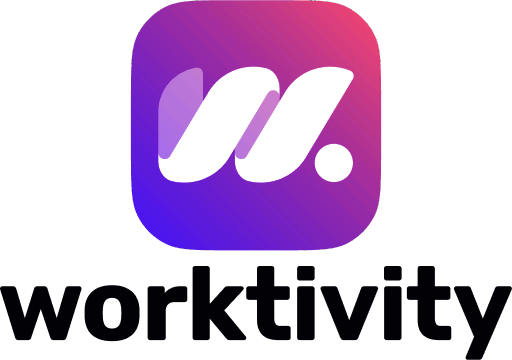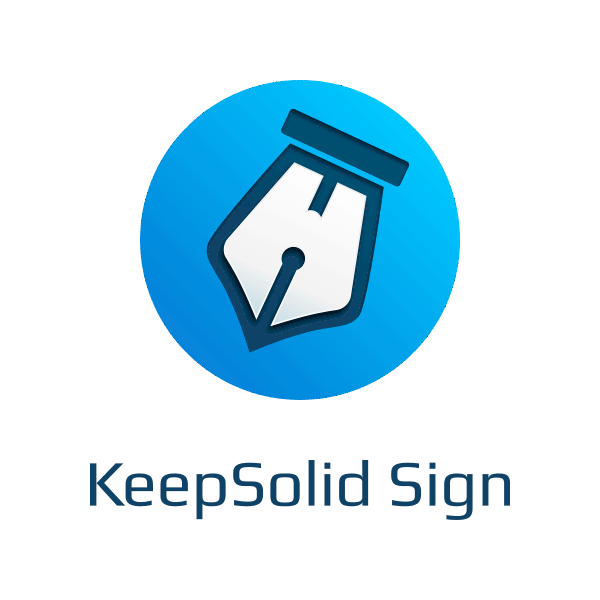Description

Tameday

Wordzen
Comprehensive Overview: Tameday vs Wordzen
Tameday and Wordzen are distinct tools designed to serve different functions and cater to varying needs in the productivity and business efficiency space. Here's an overview of each:
Tameday
a) Primary Functions and Target Markets
- Primary Functions: Tameday is a project management and team collaboration tool that combines various functionalities under one platform. It offers task management, calendar integration, messaging, file sharing, time tracking, and discussion boards.
- Target Markets: Tameday primarily targets small to medium-sized enterprises (SMEs) and startups looking for an all-in-one tool to manage projects and enhance team collaboration. Businesses in creative industries, tech startups, and agencies might find Tameday particularly useful due to its integrated features.
b) Market Share and User Base
- Tameday is a niche product in the broader project management category, which includes giants like Asana, Trello, and Monday.com. While specific market share numbers for Tameday might not be available, it caters to a smaller, more focused user base seeking an integrated solution that incorporates communication, planning, and execution tools in one.
c) Key Differentiating Factors
- Integration of Features: Unlike some competitors that might excel in one area (e.g., task management or messaging), Tameday’s strength lies in its integrated approach, reducing the need to switch between multiple platforms.
- User-Friendly Interface: Tameday is designed to be intuitive, helping users to onboard quickly without steep learning curves.
- Affordability for SMEs: With pricing models that appeal to smaller teams and businesses, Tameday is accessible to companies with budget constraints.
Wordzen
a) Primary Functions and Target Markets
- Primary Functions: Wordzen is a tool designed to enhance email productivity, specifically for Gmail users. It offers services like email composition, grammar checking, editing, and even crafting responses based on user inputs and context, effectively acting as a virtual email assistant.
- Target Markets: Wordzen targets professionals, including freelancers, executives, and teams who frequently deal with email communication and require a tool to optimize and streamline their email efficiency.
b) Market Share and User Base
- In the realm of email productivity tools, Wordzen operates in a specialized niche. It competes with other email add-ons and virtual assistant services but distinguishes itself by deeply integrating with Gmail. Though it does not lead the market, it maintains a loyal user base of professionals who rely on high email throughput and quality.
c) Key Differentiating Factors
- Human Editing Services: One of Wordzen’s standout features is its human editing service, where real editors can craft or polish emails, setting it apart from purely algorithmic solutions.
- Seamless Gmail Integration: Wordzen integrates directly with Gmail, providing tools within the familiar environment of the user’s email client, enhancing usability without requiring additional platforms.
- Focus on Quality and Professionalism: By incorporating human editors, Wordzen ensures a level of quality and professionalism in email correspondence that automated tools might not always achieve.
Comparative Summary
- Differentiation in Functionality: Tameday is all about project management and team collaboration, whereas Wordzen focuses on optimizing email communication.
- Target Audience: Tameday targets businesses seeking comprehensive project management tools, while Wordzen is aimed at individuals and professionals who handle extensive email communication.
- Feature Integration: Tameday’s integrated suite contrasts with Wordzen’s specialized email enhancement tools, reflecting their distinct market approaches.
Overall, Tameday and Wordzen serve different purposes and audiences, making it difficult to compare them directly in terms of market share and user base. However, both aim to improve efficiency in their respective realms: project management and email correspondence.
Contact Info

Year founded :
2017
Not Available
Not Available
United Kingdom
http://www.linkedin.com/company/tameday

Year founded :
2015
+1 937-838-0354
Not Available
United States
http://www.linkedin.com/company/wordzen-for-gmail
Feature Similarity Breakdown: Tameday, Wordzen
As of my last update, let's break down the feature similarities and differences between Tameday and Wordzen, focusing on common functionalities, user interface comparisons, and unique offerings.
a) Core Features in Common
While Tameday and Wordzen serve different primary functions—Tameday as a project management and collaboration tool, and Wordzen as an email assistant—the commonality in their functionalities lies more in auxiliary features related to productivity and streamlining workflows:
-
Task Management: Both tools assist in task management—Tameday through project and task organization, and Wordzen by managing and optimizing email communications.
-
Collaboration: They offer features that enhance collaboration. Tameday provides collaborative features like shared calendars and chat, while Wordzen enhances collaboration by improving communication efficiency through email.
-
Time Management: Scheduling is a vital component in both. Tameday integrates scheduling to manage projects, and Wordzen utilizes email scheduling to ensure timely communication.
b) User Interfaces Comparison
-
Tameday: Its interface is designed to manage multiple facets of projects simultaneously. It typically includes dashboards and panels for project management, to-do lists, calendars, and communication tools. Its design focuses on being intuitive for navigating between different project elements.
-
Wordzen: Operating within the Gmail interface, it has a more streamlined and minimalist approach, focusing on simplicity. Users interface with Wordzen via the Gmail ecosystem, helping keep the user experience contextual and straightforward, as the core use is for managing emails efficiently.
c) Unique Features
- Tameday:
- Integrated Project Workspace: Offers a comprehensive suite for project management, including document storage, task timelines, and team messaging.
- All-in-one Platform: Aimed at managing various aspects of project planning and execution within a single interface.
- Wordzen:
- Email Management Services: Provides human-powered editing and response drafting for emails, which significantly enhances email productivity.
- Integration with Gmail: Being deeply integrated, it allows users to perform advanced functions directly within their email platform, unlike typical standalone project management tools.
- Natural Language Processing: Uses machine learning to ensure emails are well-composed before sending.
Conclusion
Tameday and Wordzen are both productivity-focused but address different needs within that realm. Tameday is ideal for holistic project management environments, while Wordzen focuses on optimizing email communications as part of the workflow. Each tool's unique features align with their primary service offerings, making them distinct in their market segments.
Features

Not Available

Not Available
Best Fit Use Cases: Tameday, Wordzen
Tameday
a) Best Fit Use Cases for Tameday:
- Types of Businesses or Projects:
- Small to Medium-Sized Enterprises (SMEs): Tameday is ideal for SMEs that need an all-in-one project management and collaboration tool. It offers features like task management, chat, file storage, and calendar integration, which are crucial for businesses looking to streamline their operations.
- Creative Agencies: Agencies focusing on design, marketing, or digital media can benefit from Tameday’s collaborative features. Its ability to integrate tasks, discussions, and timelines makes it easier for creative teams to manage multiple projects.
- Remote Teams: As remote work becomes more prevalent, Tameday's suite of tools for communication and task management can help disparate teams stay aligned and productive, regardless of location.
- Non-profit Organizations: Organizations often operate on tight budgets and need cost-effective solutions. Tameday's comprehensive service offers these organizations a single platform to manage their initiatives and collaborate effectively.
d) Catering to Different Industry Verticals or Company Sizes:
- Industry Verticals: Tameday is flexible enough to be used across various sectors such as education, technology, marketing, and more. Its project management tools cater to industries where team collaboration and project deadlines are pivotal.
- Company Sizes: Tameday is most effective for small to medium-sized businesses. Larger enterprises might require more specialized solutions, but Tameday can still serve as a useful tool for smaller departments within a larger organization.
Wordzen
b) Best Fit Use Cases for Wordzen:
- Scenarios:
- Professional Email Management: Wordzen is an excellent choice for individuals or businesses that need assistance with managing professional emails efficiently. It’s particularly useful for those who need to maintain a high level of communication but do not have the time to craft and manage emails themselves.
- Customer Support Teams: Businesses with teams dedicated to handling customer queries and complaints can leverage Wordzen to ensure high-quality, professionally written email responses.
- Executives and Managers: Busy professionals who receive a high volume of emails can use Wordzen to ensure prompt and well-structured responses, freeing up time for other critical tasks.
- Sales Teams: For sales teams that rely heavily on email communication to nurture leads and close deals, Wordzen can enhance email effectiveness through well-crafted messaging.
d) Catering to Different Industry Verticals or Company Sizes:
- Industry Verticals: Wordzen serves various verticals, including real estate, consulting, e-commerce, and customer service. It is beneficial in any industry where effective written communication is key to success.
- Company Sizes: While useful for large corporations, Wordzen is particularly beneficial for small to medium-sized businesses where resources for full-time dedicated administrative support might be limited. It enables these businesses to maintain professional email communication without needing a large staff.
Both Tameday and Wordzen offer solutions tailored to enhance productivity and communication, but they cater to distinct needs—Tameday focuses on project management and team collaboration, while Wordzen specializes in enhancing email communication. Depending on the operational needs, companies and individuals can choose the tool that best fits their requirements.
Pricing

Pricing Not Available

Pricing Not Available
Metrics History
Metrics History
Comparing teamSize across companies
Conclusion & Final Verdict: Tameday vs Wordzen
When assessing Tameday and Wordzen, it's important to evaluate which product offers the best overall value, considering the specific needs and preferences of the user.
a) Best Overall Value
-
Tameday: Offers an array of features for project management including task management, team collaboration, calendar integration, and communication tools. It is designed to help teams coordinate their efforts in a streamlined manner.
-
Wordzen: Primarily focuses on enhancing email productivity through email editing and proofreading services. It's ideal for professionals who require assistance with email crafting and efficiency.
Conclusion for Best Overall Value: The best value depends largely on the user's primary needs. For those primarily seeking project management and team collaboration tools, Tameday offers the best overall value. For users looking for email editing capabilities and improved communication efficiency, Wordzen would provide more value.
b) Pros and Cons
Tameday:
-
Pros:
- Comprehensive suite for managing tasks and projects.
- Enhances team communication and collaboration.
- Integration with calendars and other productivity tools.
-
Cons:
- May have a learning curve for new users or those unfamiliar with project management software.
- Might not be necessary for individuals or teams not needing extensive project management functionalities.
Wordzen:
-
Pros:
- Improves email quality with professional editing.
- Saves time on email composition and response, particularly useful for busy professionals.
- Enhances communication for non-native English speakers or those wanting to improve their writing tone and clarity.
-
Cons:
- Limited to email-related productivity; doesn't offer broader project management capabilities.
- Reliant on internet access and may incur additional costs for services.
c) Recommendations
-
For Users Primarily Needing Team Collaboration and Project Management:
- Tameday is recommended as it offers comprehensive features to manage tasks and projects efficiently, making it ideal for teams and organizations needing robust project management capabilities.
-
For Users Seeking to Enhance Email Communication:
- Wordzen is ideal for individuals who send a high volume of emails and require assistance to enhance the clarity and professionalism of their communications. It's particularly useful for those in client-facing roles where email tone and precision are critical.
-
For Hybrid Needs:
- Users may consider integrating both tools, using Tameday for project management and collaboration, while utilizing Wordzen for email efficiency, if budget and workflow permit.
In conclusion, the decision between Tameday and Wordzen should be guided by the primary needs—whether the focus is on team collaboration and project management, or on enhancing email productivity. Each tool offers unique strengths that cater to different aspects of productivity.
Add to compare
Add similar companies



